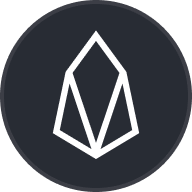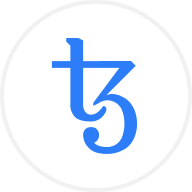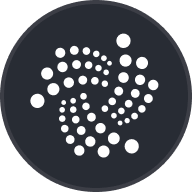EOS (EOS) is one of the third-generation blockchains looking to redefine how we access and use decentralized applications (dApps). The goal is to create a robust infrastructure where developers can launch and run permissionless applications.
Like Ethereum, EOS relies on smart contract technology to eliminate intermediaries and enable self-executing services. As a third-generation blockchain, EOS focuses on performance and user experience. This is evident in its network speed and low transaction fees. Users can enjoy near-zero fees even as EOS can process up to 4,000 transactions per second.
EOS owes its optimized performance to its delegated Proof of Stake (DPoS) consensus protocol that offers high scalability without requiring validators or participants to purchase expensive hardware. As its name implies, the DPoS protocol is the variant of the popular Proof of Stake (PoS) algorithm that involves delegating votes and stakes to validator nodes, also known as block producers in the EOS ecosystem.
Holders of EOS tokens are awarded governance power equivalent to their stake in the system. Token holders can also vote for block producers by delegating their stake to them. Additionally, they can vote on proposals for upgrading or modifying the protocol.
Like most crypto projects, EOS's consensus mechanism adopts an incentivized method for enabling a sustainable and secure blockchain. Block producers receive EOS when they add new blocks to the EOS blockchain.
EOS price and tokenomics
The EOS token sale lasted a year, during which 900 million EOS tokens were sold. Another 100 million EOS was set aside for Block.one, the company that developed EOS and the EOSIO blockchain framework. These tokens were subjected to a vesting period. In total, 1 billion EOS tokens were created during the ICO stage.
Another noteworthy fact about EOS was that it first existed as an ERC-20 token. However, in June 2018, the ERC-20 version of EOS became redundant as holders began to swap their coins for the new EOS token native to the EOS blockchain.
EOS has an inflationary emission mechanism, as its supply is not capped. Instead of imposing transaction fees as part of the validator's reward mechanism, the EOS ecosystem generates new EOS tokens to pay block producers.
About the founders
The EOSIO blockchain framework used as the building block for EOS was developed by Block.one, a blockchain development company co-founded by Daniel Larimer and Brendan Blumer in 2017.
Larimer is popular within the blockchain ecosystem as a serial entrepreneur and influential developer. He introduced the delegated PoS consensus mechanism and served as the CTO of Block.one until 2020. Before his involvement with EOS, Larimer founded the decentralized exchange BitShares and a blockchain-based social media platform called Steemit.
On the other hand, Blumer is currently the CEO of Block.one. Before his stint in the blockchain industry, Blumer launched Okay.com, one of South Korea's largest real estate agencies.
































Socials